The History
of the Sanctuary
The History of the Sanctuary:
Miracles, Faith, and Traditions
The Sanctuary of the Holy Trinity has its origins deeply intertwined with history and faith, which, over the centuries, have made this place a focal point for those seeking the meeting of heaven and earth. Here, on the cliffs overlooking the sea, stood the villa of the Roman consul Lucius Munatius Plancus, whose cisterns still remain as a testament to the greatness of that era. Around the year 1000, a group of Benedictine monks laid the foundations of this place of prayer, drawn by the profound spirituality of the mountain that split at the death of Christ. Their presence marked the beginning of the Sanctuary’s history, which soon became a destination for pilgrims and a center of popular devotion. In the 15th century, the site was further enriched by the construction of the Chapel of the Crucifix, suspended between the rocks. This chapel was built on a boulder carved from the cliff and wedged between two mountain walls, about 40 meters above sea level. One of the most striking events linked to the Sanctuary occurred in May 1615. A military ship, passing in front of the chapel, failed to salute the crucifix with the customary three cannon shots. Soon after, a lightning bolt struck the ship’s mainmast, killing its captain. The Marquis of Santa Croce, deeply moved by the incident, made a penitent pilgrimage to the Sanctuary, dragging the broken mast as a sign of repentance. For centuries, the Sanctuary has been a symbol of faith and tradition—a place where the sacred meets the secular, offering visitors an experience of deep spirituality and serenity
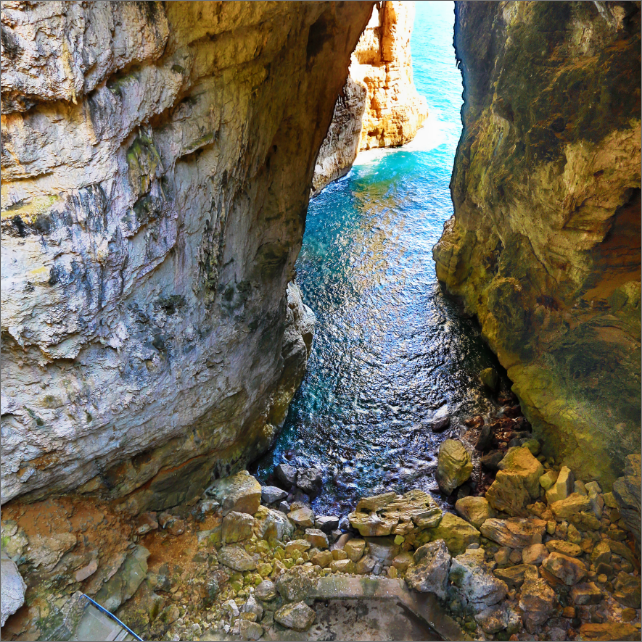
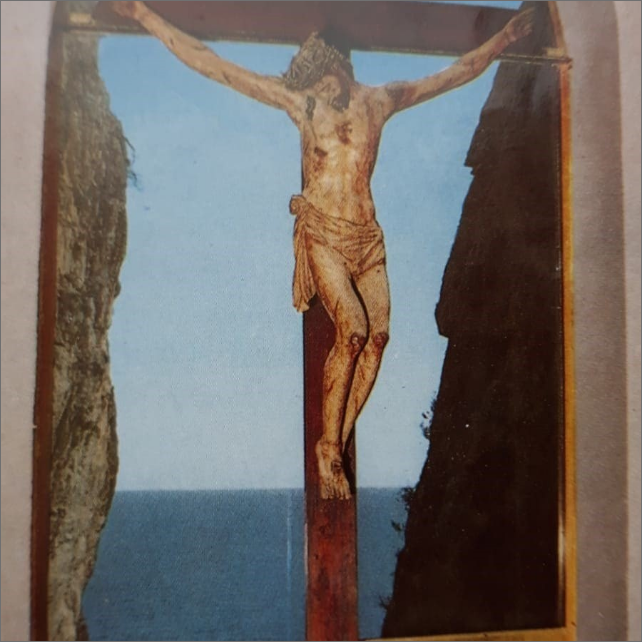
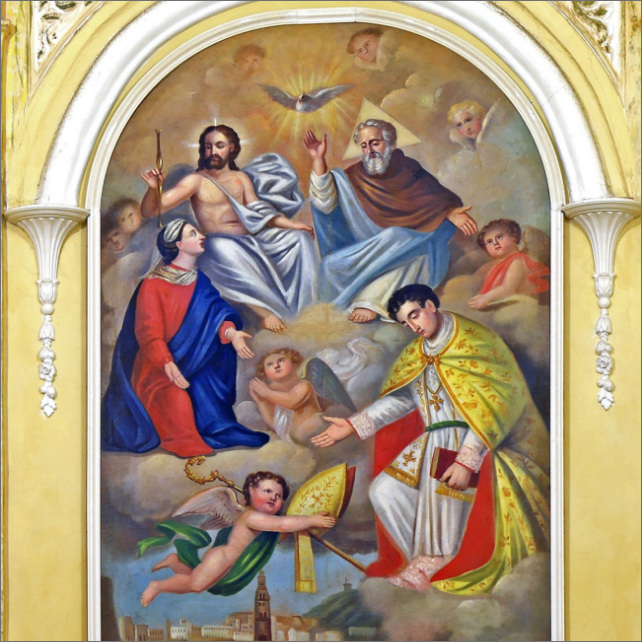

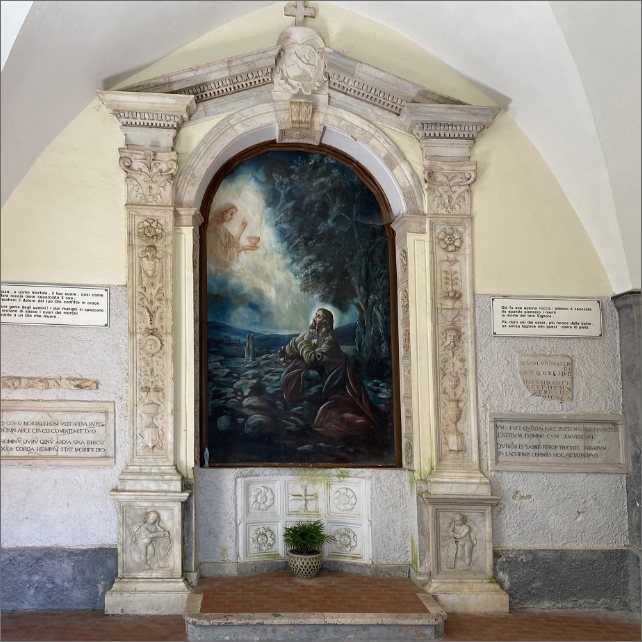
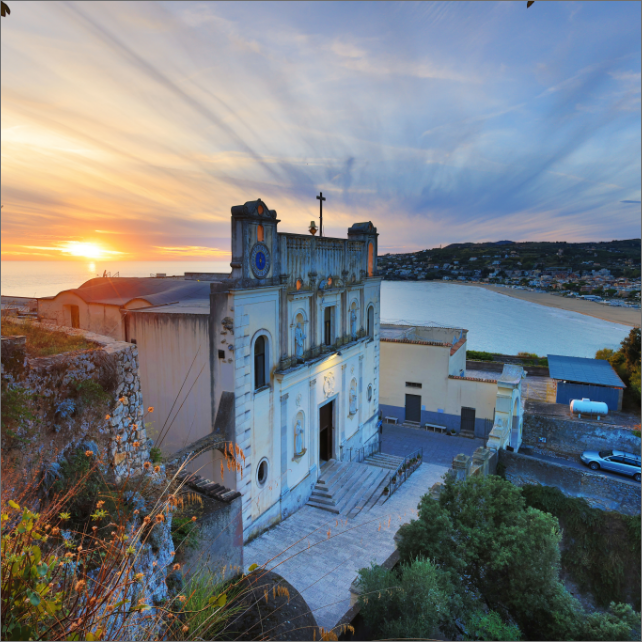
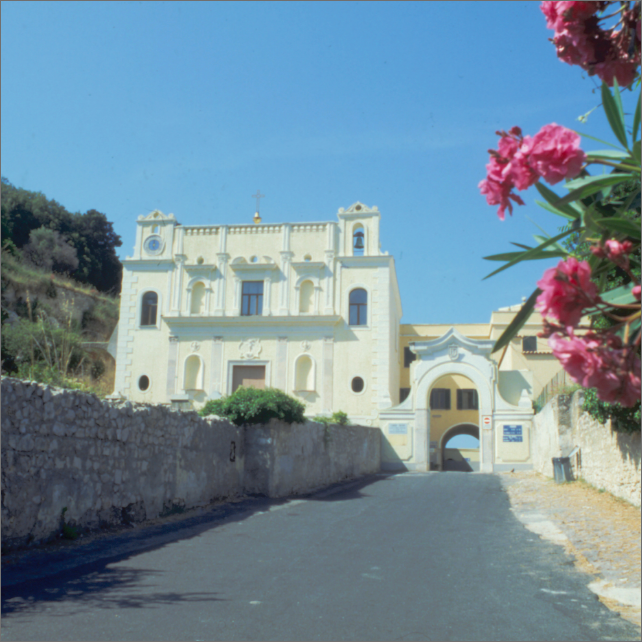
The Sanctuary
of the Holy Trinity
The Church of the Holy Trinity is the spiritual heart of the Sanctuary. It was founded in the early medieval period by Benedictine monks, who established their first prayer settlement here. Over the centuries, the church has undergone various transformations, culminating in an intervention by Alcantara monks, which gave it its current appearance, characterized by simplicity and serenity. The church’s façade is adorned with four statues of saints who played key roles in the Sanctuary’s history: Saint Benedict, founder of the monastic order; Saint Philip Neri, who prayed and meditated here; Saint Francis of Assisi, who preached in Gaeta in 1222; and Saint Peter of Alcantara, whose spirituality had a profound influence on the local community. Inside, the main altar features a large painting of the Holy Trinity, together with of Our Lady and Saint Erasmus, the patron saint of Gaeta. Among the notable works of art is the statue of the Pietà, inspired by the sculpture of Giovanni Duprè. A commemorative plaque marks the visit of Pope Pius IX, who consecrated the Sanctuary during his stay in Gaeta in 1849.

The Split Mountain:
A Path of Faith Through the Rocks
One of the most striking aspects of the Sanctuary of the Holy Trinity is the Split Mountain, the central rift of the three fissures in Mount Orlando—a place where spirituality and nature are deeply intertwined. According to the tradition, the cracks in the rocks were created at the moment of Christ’s death, symbolizing the earth's participation in the Savior’s ultimate sacrifice (cf. Mt 27:50-51). As you walk through the passage in the rockface, which is divided in half, you reach the Crucifix Chapel, built in the 15th century on a boulder wedged between two mountain walls about 40 meters above the sea. This chapel, strongly associated with popular devotion to Jesus Christ, as the second person of the Holy Trinity, has always been a sacred place, especially for sailors. At the entrance to the passage, there is a corridor where visitors can admire the Via Crucis—a work commissioned by King Ferdinand II in 1849 and created by the Alcantara Monks. The Stations of the Cross, painted on Vietri ceramics by master Raimondo Bruno, are paired with verses from Metastasio to honor the Passion of Christ.
In this place of splendor, where the wind whispers and the scent of the sea fills the air, the path through the Split Mountain becomes a profound experience of reflection and faith.
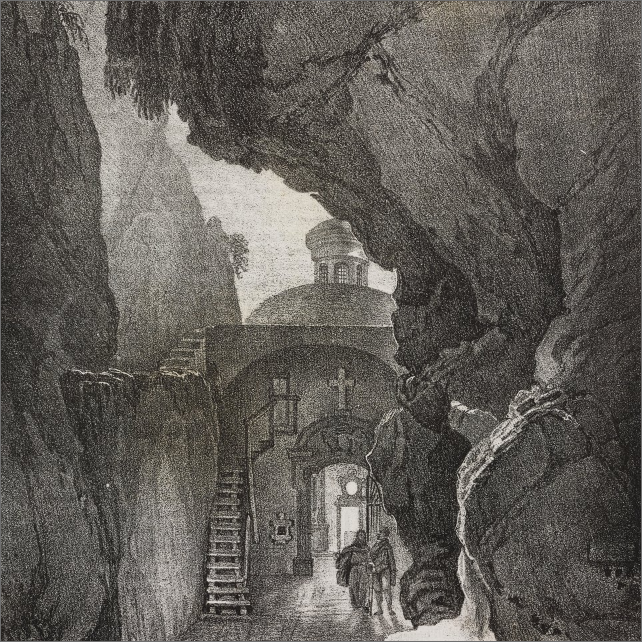
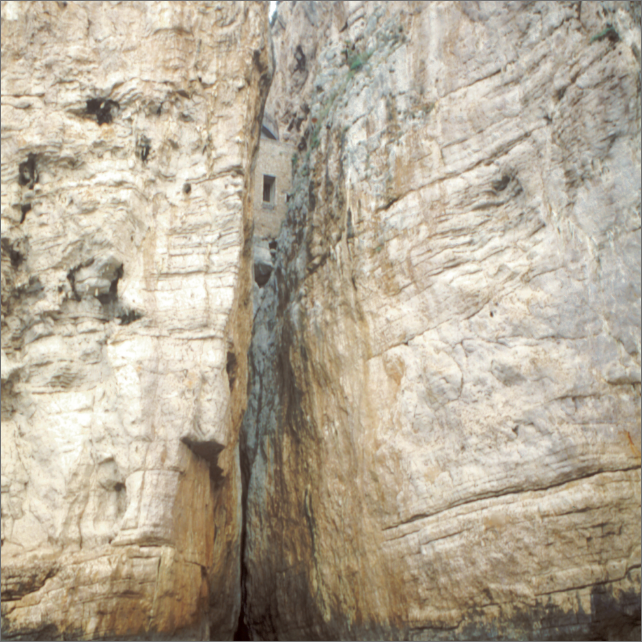

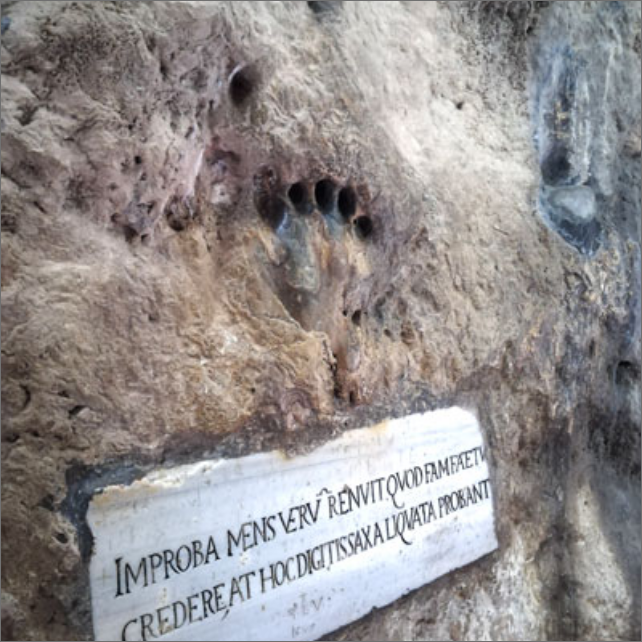

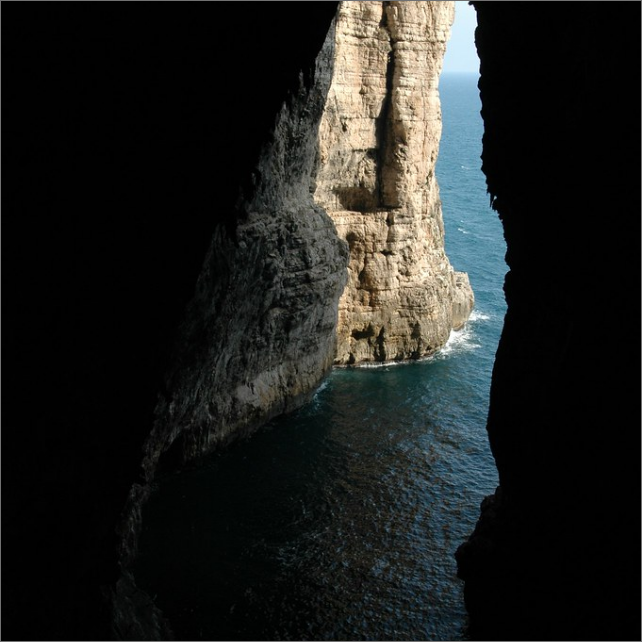
The Turk's Hand:
A Mark in the Rock
In XV century, a Saracen sailor, despising the tradition according to the mountain split at Christ’s death, leaning his hand on the rock, this, almost melting under his fingers, became soft as dough and left an imprint still visible.
As testimony of this event, a latin inscription engraved on the wall says:
“Improba mens verum renuit quod fama fatetur, credere at hoc digitis saxa liquata probant.” | “He despitefully refused to believe what tradition claimed, yet the proof lies in this rock, softened beneath his fingers”
Pime in Gaeta
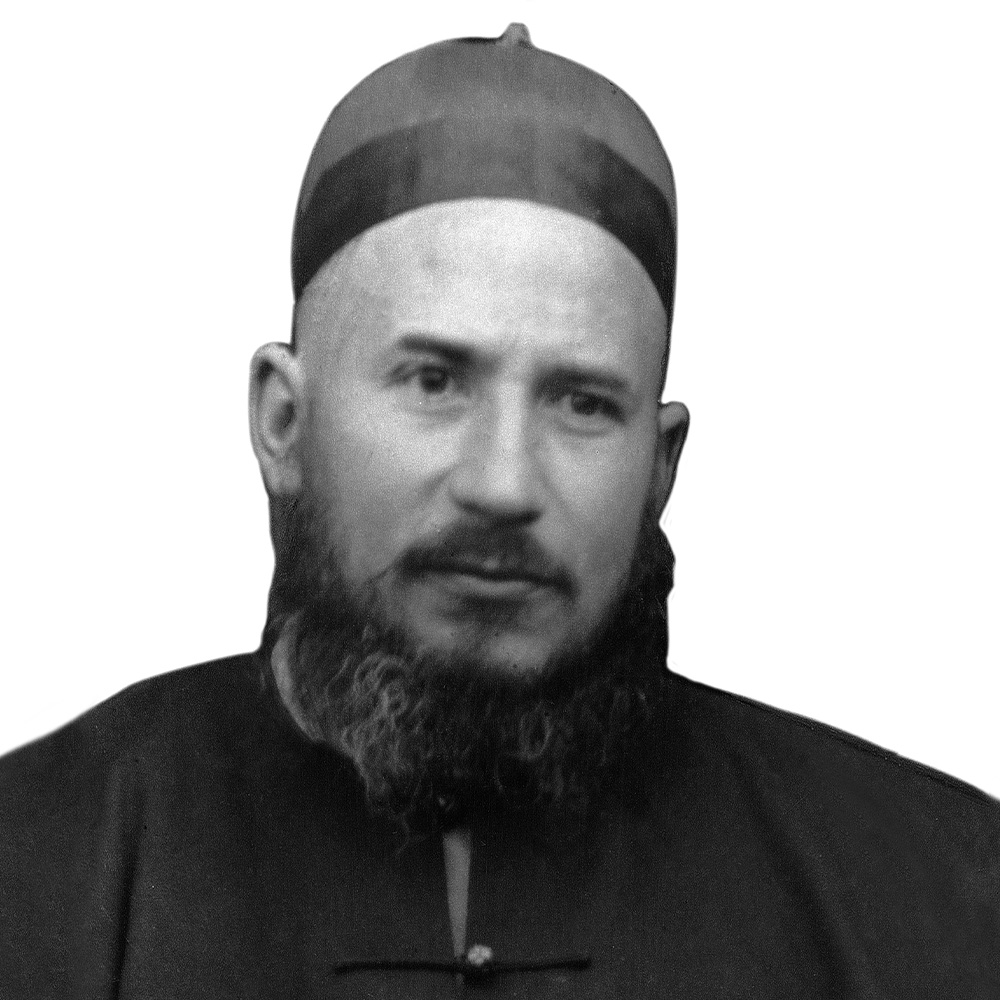
Saint Alberico Crescitelli
Priest and Martyr
Father Alberico Crescitelli, an Italian missionary, was born in Altavilla Irpina on June 30, 1863, into a large and wealthy family. After studying and working in his hometown, in 1880, at the age of 23, he entered the Pontifical Seminary of the Holy Apostles Peter and Paul in Rome, where he prepared for his mission. In 1888, he departed for China, arriving in Hanzhong, the seat of the Apostolic Vicariate of Southern Shaanxi. There, he dedicated himself passionately to the care of Christians and to catechesis, despite the difficulties and the persecutions faced by foreign missionaries. Whenever concerns were raised about his well-being, he would always respond with composure: “You feel better when you are where God wants you.”
In 1900, during the Boxer Rebellion, he was sent to Ningqiang County, an isolated and dangerous region. Despite the risks, he chose to remain with his Christian community, which was being ostracized by the local population. On July 21 of that same year, he was betrayed by a local resident, captured, and martyred by a mob driven by xenophobic and anti-Christian hatred. He did not attempt to escape but accepted his fate with serenity. He was tortured and brutally dismembered.
During the beatification homily delivered on February 18, 1951, Pope Pius IX recalled that “his martyrdom was, humanly speaking, horrible—perhaps one of the most atrocious recorded in history.” In 2000, he was canonized by Pope John Paul II as one of the 120 Chinese Martyrs.
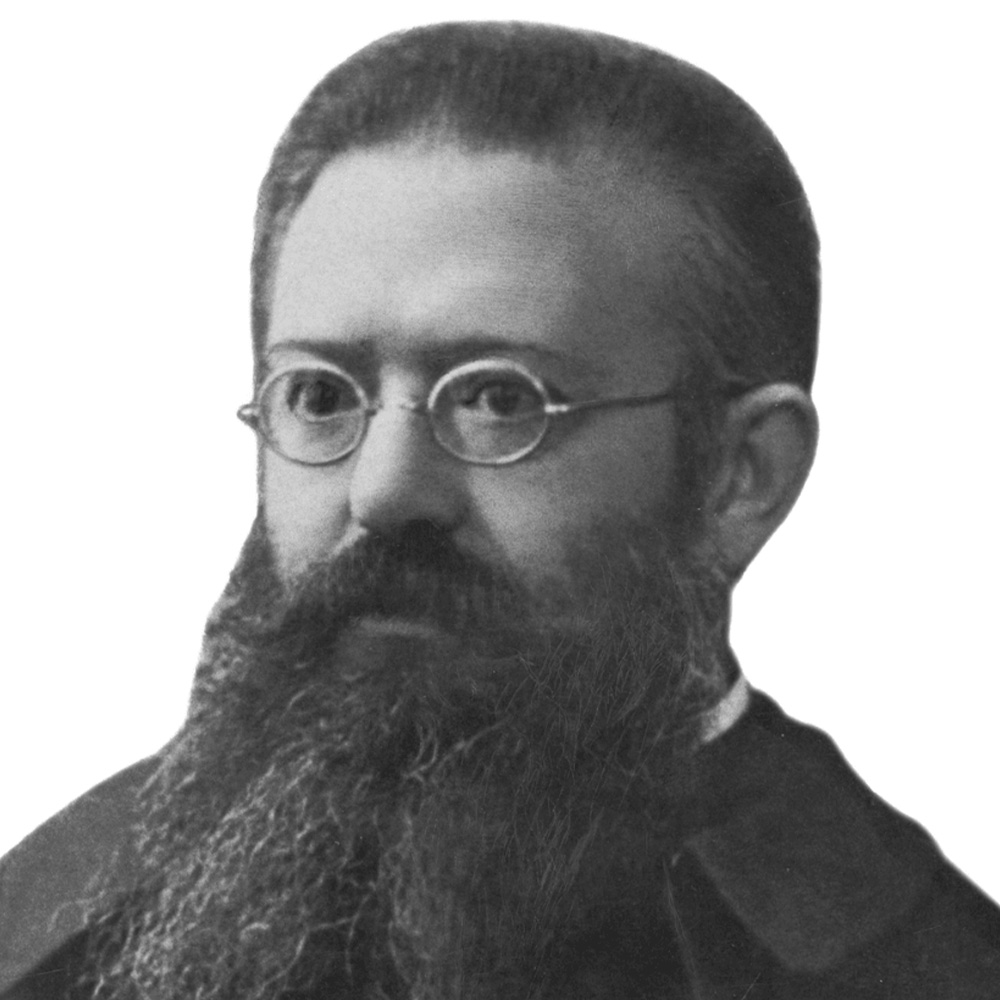
Blessed Paolo Manna
Priest and Missionary
Blessed Paolo Manna was born in Avellino on January 16, 1872. After studying at technical schools in Naples and Rome, he pursued philosophy at the Gregorian University. At the age of 19, he entered the Institute for Foreign Missions of Milan, where he was ordained a priest in 1894. The following year, in 1895, he left for the mission in Toungoo, Western Burma, dedicating himself wholeheartedly to missionary work. However, in 1907, a serious illness forced him to return to Italy.
In 1916, he founded the Missionary Union of the Clergy, an initiative aimed at fostering missionary commitment among priests. Three years later, in 1919, he launched "Missionary Italy," a movement to engage young people in missionary activities. Additionally, he established the Southern Seminary for Foreign Missions in Trentola Ducenta (Caserta), a training center for future missionaries.
As General Superior of the Lombardy Institute for Foreign Missions, he collaborated with Sister Giuseppina Donadoni to establish the Missionaries of the Immaculate, a religious congregation dedicated to missionary work. In 1926, with the unification of the Roman Seminary, the Lombardy Foreign Missions Institute became the Pontifical Institute for Foreign Missions (in Italian, Pontificio Istituto Missioni Estere, PIME).
Paolo Manna firmly believed that missionary work was not just about sending missionaries abroad but about building local Churches, where Christians could live their faith independently, rooted in their own cultural context. His motto was: “The whole Church for the whole world.” He also saw ecumenism—dialogue and cooperation among different Christian denominations—as essential to overcoming divisions and strengthening the Church’s mission.
Paolo Manna passed away in Naples on September 15, 1951. He was beatified on November 4, 2001, by Pope John Paul II. His remains rest in the Pime Chapel in Trentola Ducenta, where he continues to be a source of inspiration for young people and missionaries.
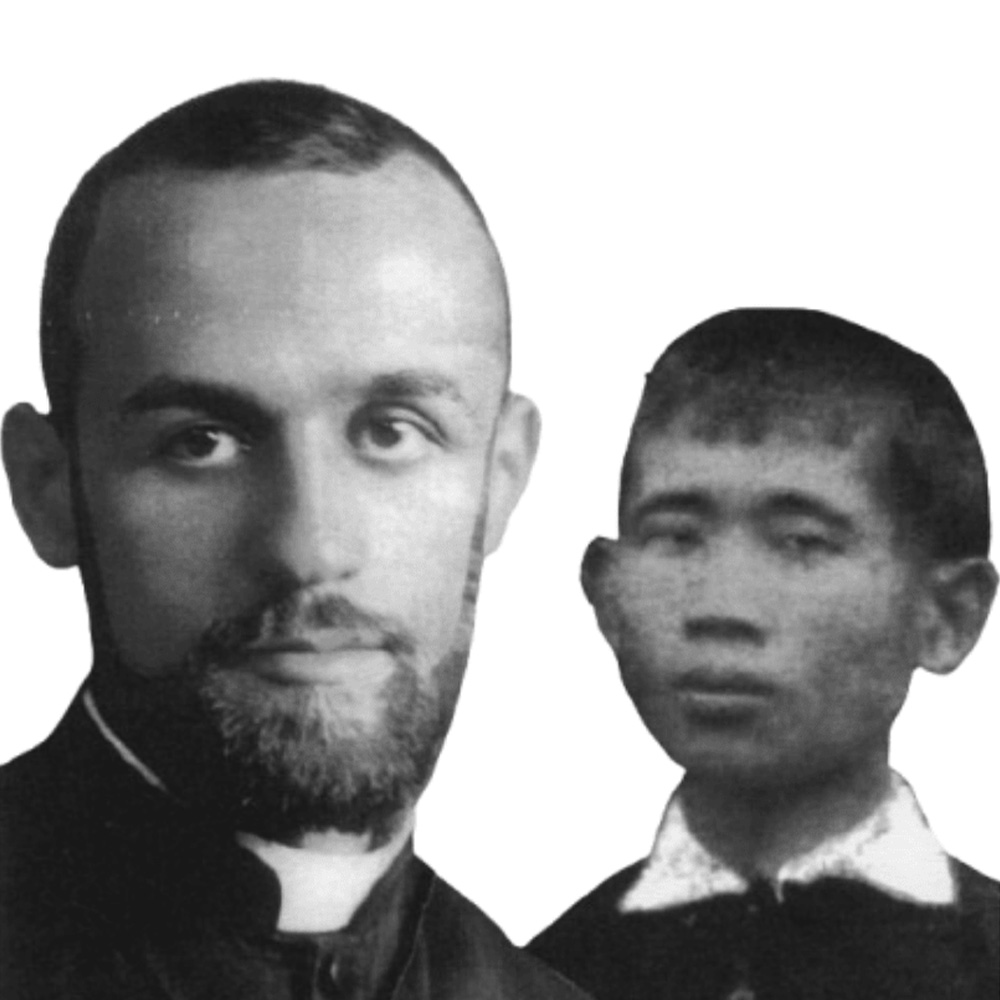
Blessed Mario Vergara | Blessed Isidoro Ngei Ko Lat
Priest and Martyr
Mario Vergara was born on November 16, 1910, in Frattamaggiore, near Naples, into a large but wealthy family. After studying at the diocesan seminary, in 1929, he joined the Pontifical Institute for Foreign Missions (Pontificio Istituto Missioni Estere, PIME). Ordained a priest in 1934, he left for Burma just a month later. There, he dedicated himself passionately to missionary work, studying the languages of the Karen tribes and providing medical care to the local people. In Toungoo, his life was marked by sacrifice and hardship. During World War II, following the Japanese invasion, he was interned for four years in a concentration camp in India. Despite his suffering, he remained steadfast in his faith. Calm and measured, yet firm, he often wrote: "The Lord, if He willed it this way, will also know how to bring good from it." Freed at the end of the war, Father Mario returned to Burma. Though weakened by his years of imprisonment, he courageously took on the challenge of founding a mission in a remote area of the country, at an altitude of 2,000 meters. He faced extreme poverty, language barriers, and logistical difficulties, but his commitment and dedication never wavered. By January 1950, as political tensions and conflicts escalated between the Burmese government and Karen rebels, his deep connection with the local population made him increasingly suspect in the eyes of the authorities. On May 24 of that same year, Father Mario, along with his fellow missionary Father Pietro Galastri and the Burmese catechist Isidoro Ngei Ko Lat, was arrested. They were tortured and executed, and their bodies were thrown into the Salween River. The death of Father Mario Vergara became a powerful symbol of unwavering faith and hope. His sacrifice, along with that of Isidoro Ngei Ko Lat—who had been baptized by Blessed Paolo Manna and became the first Burmese to be beatified—represents the highest expression of a life wholly dedicated to the mission and the Church. Their legacy continues to inspire people around the world.
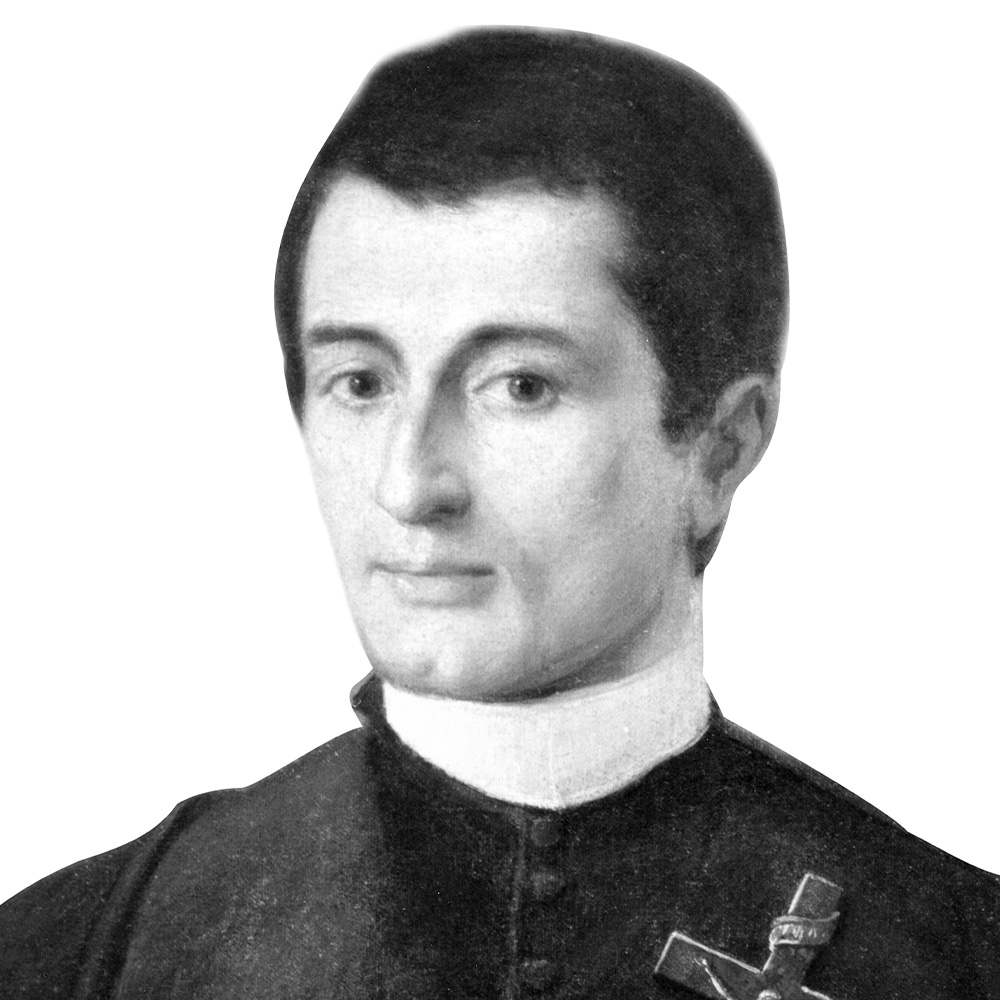
Blessed Giovanni Mazzucconi
Priest and Martyr
Blessed Giovanni Battista Mazzucconi was born on March 1, 1826, in Rancio di Lecco, in the Diocese of Milan. After completing his theological studies, he was ordained a priest in 1850 and became one of the first members of the newly founded Foreign Missions Seminary—an institute established to train priests for distant missions. With great perseverance, Mazzucconi prepared himself for his departure to Oceania. On March 16, 1852, he set sail with the first expedition of the new institute, bound for the islands of Melanesia.
Upon arriving at Rook Island (now Umboi), Mazzucconi faced not only harsh living conditions but also strong resistance from the local population to the message of the Gospel. Despite these challenges, he lived with a deep spirit of sacrifice, dedicating himself wholeheartedly to evangelization and to improving the living conditions of the island’s inhabitants. His mission unfolded in isolation, amid illness and suffering, yet his faith remained steadfast.
The missionaries' health deteriorated due to tropical diseases. In an effort to recover, Father Mazzucconi traveled to Sydney for medical treatment on January 20, 1855. However, on his return voyage to the islands—unaware that the mission had been abandoned by the other missionaries—he was killed on September 20, 1855, by the indigenous people of Woodlark Island, along with the entire ship’s crew. The shipwreck was the only remaining testimony to their martyrdom.
After 129 years, in 1984, Giovanni Mazzucconi was beatified by Pope John Paul II. His life remains a shining example of faith, hope, and love for the Gospel—witnessed through his unwavering devotion to evangelization until his final breath.
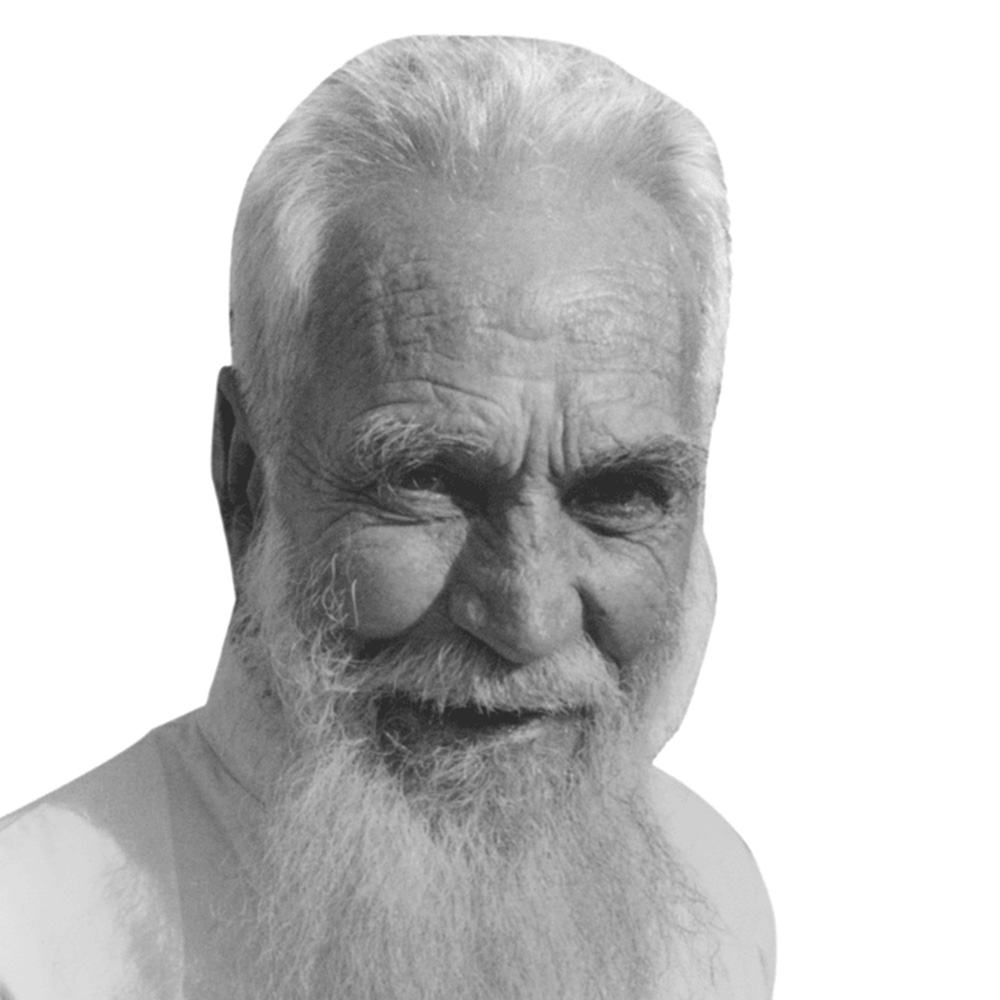
Blessed Clemente Vismara
Priest and Missionary
Born in Agrate Brianza on September 6, 1897, Clemente Vismara lost his parents at a young age and entered the Diocesan Seminary, where he was ordained a priest in 1923. He dedicated his life to the mission in Burma under the Pontifical Institute for Foreign Missions.
For 65 years, he lived in the forests among the Akhà, Ikò, and Lahu tribes, establishing numerous missions and becoming a guiding light for the community, especially for orphans, widows, and children, to whom he devoted his entire life.
He embarked on his apostolic mission with great courage, facing poverty, tropical diseases, and countless logistical challenges. During World War II in 1941, he was interned by the British, but he resumed his mission even under Japanese occupation.
In 1955, he moved to Mong Ping, where he founded schools, churches, and orphanages, fostering both education and spiritual growth among his parishioners.
Known for his motto, "You are old when you are useless" Father Clemente lived his later years with unwavering energy, always serving the most vulnerable.
He passed away on June 15, 1988, at the age of 91, at peace with the fruits of his lifelong work. Beatified in 2011, he is remembered for his tireless faith and missionary dedication.
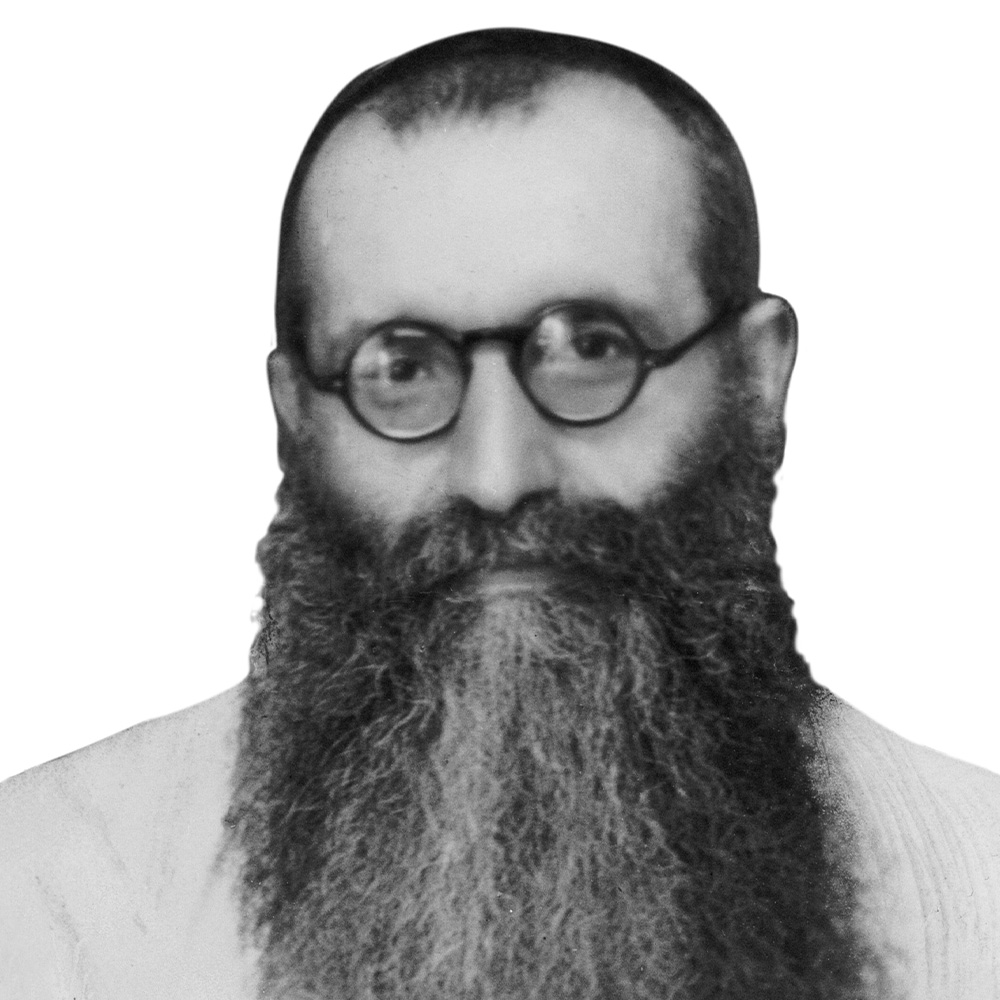
Blessed Alfredo Cremonesi
Priest and Martyr
Father Alfredo Cremonesi was born on May 16, 1902, in Ripalta Guerina, in the Diocese of Crema. In his youth, he suffered from severe health issues, including lymphatic disease, which kept him bedridden for long periods. Despite his critical condition and bleak prognosis from doctors, he miraculously recovered, thanks to his faith in Saint Thérèse of Lisieux and the Christ Child. This experience deeply influenced his vocation, leading him to choose a missionary life. With the support of his mother, he entered the Lombard Seminary for Foreign Missions and was ordained a priest in 1924.
In 1925, Father Alfredo departed for Burma (now Myanmar), where he dedicated his life to serving the Red Karen people, an ethnic group in the Toungoo region, a mountainous area. During World War II, he faced numerous hardships. Though spared from internment in concentration camps in India, he endured the Japanese occupation, which brought violence and looting to the villages. Forced to flee into the forest with civilians, he suffered severe deprivation. Yet, through all difficulties, his faith remained steadfast, and he continued his mission with unwavering courage and determination.
After the war and Burma’s subsequent independence, he found himself caught in the civil conflict between the central government and rebel forces. Despite the dangers, he chose to return to the village of Donoku, where his mission had begun, to continue serving its people. On February 7, 1953, amid clashes between government soldiers and rebels, Father Alfredo was killed in cold blood while trying to protect his parishioners. On October 19, 2019, he was beatified, recognized as a model of faith and devotion, remaining true to his mission until his ultimate sacrifice.
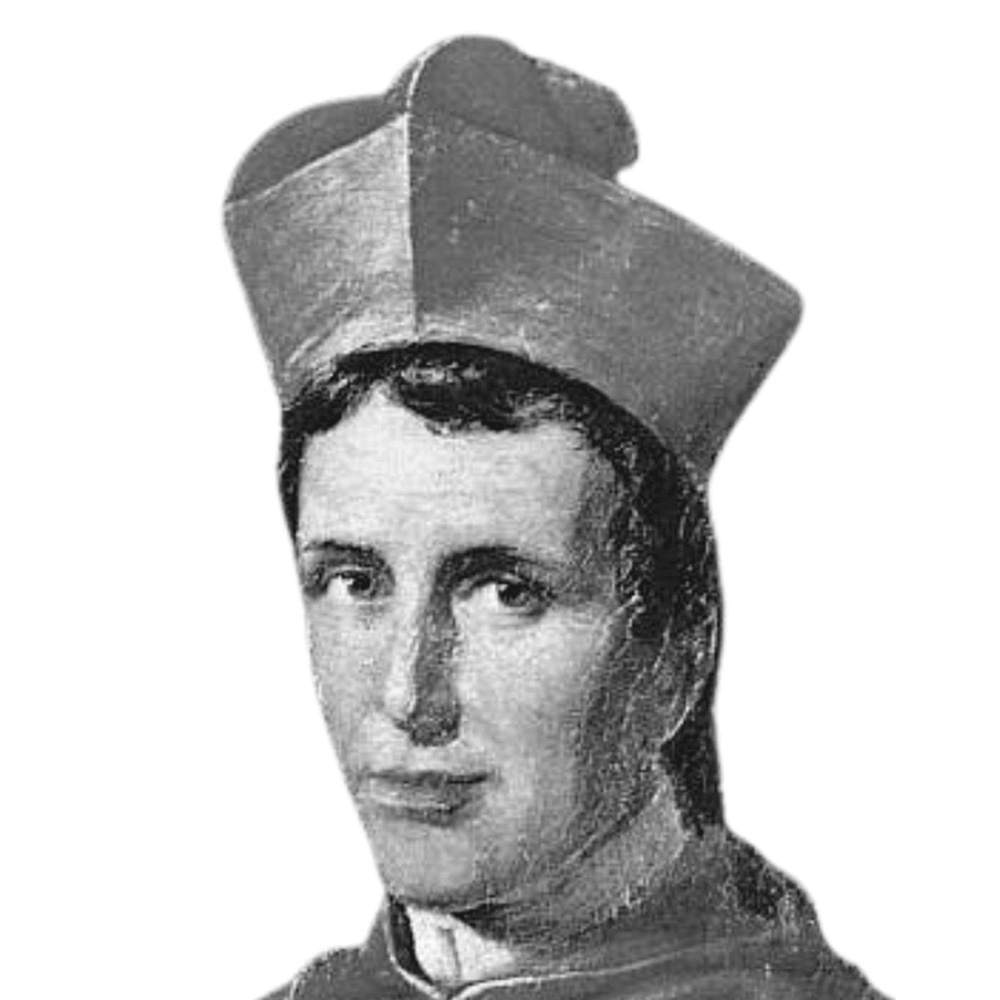
Venerable Angelo Ramazzotti
Bishop and Founder
Monsignor Angelo Ramazzotti was born on August 3, 1800, in Milan. After studying law and completing a legal internship, he felt called to the priestly life. In 1829, after being ordained a priest, he joined the Missionary Oblates of Rho, dedicating himself to preaching and parish missions. In 1850, with the support of the Lombard bishops, he founded the Lombard Seminary for Foreign Missions, a step that would later lead to the establishment of the Pontifical Institute for Foreign Missions (PIME).
Appointed Bishop of Pavia in 1850 and later Patriarch of Venice in 1858, Ramazzotti remained deeply committed to missionary work, focusing primarily on the poorest and the most marginalized. Despite numerous hardships, he was distinguished by his great charity and humility, accepting the cardinal appointment from Pope Pius IX solely out of obedience.
He passed away on September 24, 1861, in Gherla, just three days before his official elevation to cardinal, leaving behind a legacy of faith, charity, and devotion. His remains rest in the Church of Saint Francis Xavier in Milan. In 2015, Pope Francis declared him Venerable in recognition of his heroic virtues.
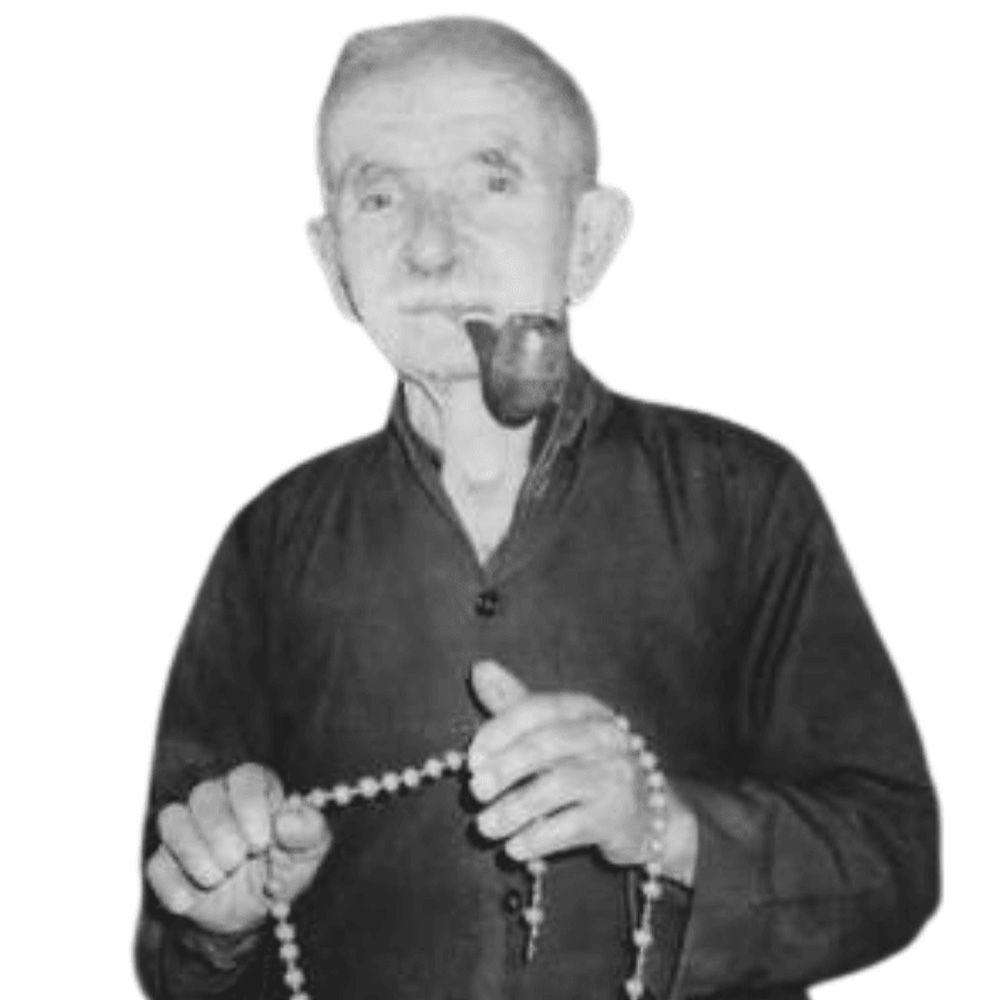
Venerable Brother Felice Tantardini
Felice Tantardini nacque il 28 giugno 1898 a Introbio, in provincia di Como, e fin da giovane dimostrò una straordinaria dedizione al lavoro. Dopo aver lavorato come fabbro nella bottega di famiglia, partecipò alla Prima Guerra Mondiale, dove fu catturato dai tedeschi, ma riuscì a fuggire. Tornato a casa, il suo desiderio di diventare missionario lo portò a entrare nel Pontificio Istituto Missioni Estere (PIME) nel 1921. Un anno dopo, partì per la Birmania, dove avrebbe vissuto per quasi 70 anni.
Affectionately known as “God’s Blacksmith,” Brother Felice tirelessly dedicated himself to improving the living conditions of the local people. In addition to his work as a blacksmith, he built churches, hospitals, schools, and bridges. His mission was not limited to construction; he also devoted himself to catechesis and teaching, caring for the sick and the outcasts. Despite many hardships—including the challenges posed by the Japanese Army during World War II—he never stopped serving others. Traveling on foot or horseback across rugged terrain, he was always seen with his rosary in hand.
For him, work was an act of prayer, and his life was marked by an unwavering faith and a profound love for others. Felice Tantardini passed away on March 23, 1991, leaving behind a legacy of charity and devotion. He is buried in the garden of the “Holy Infant Jesus” center for disabled people in Payaphyu, Myanmar, where his grave has become a pilgrimage site. Venerated by the community he served, he was declared Venerable by Pope Francis on June 11, 2019.
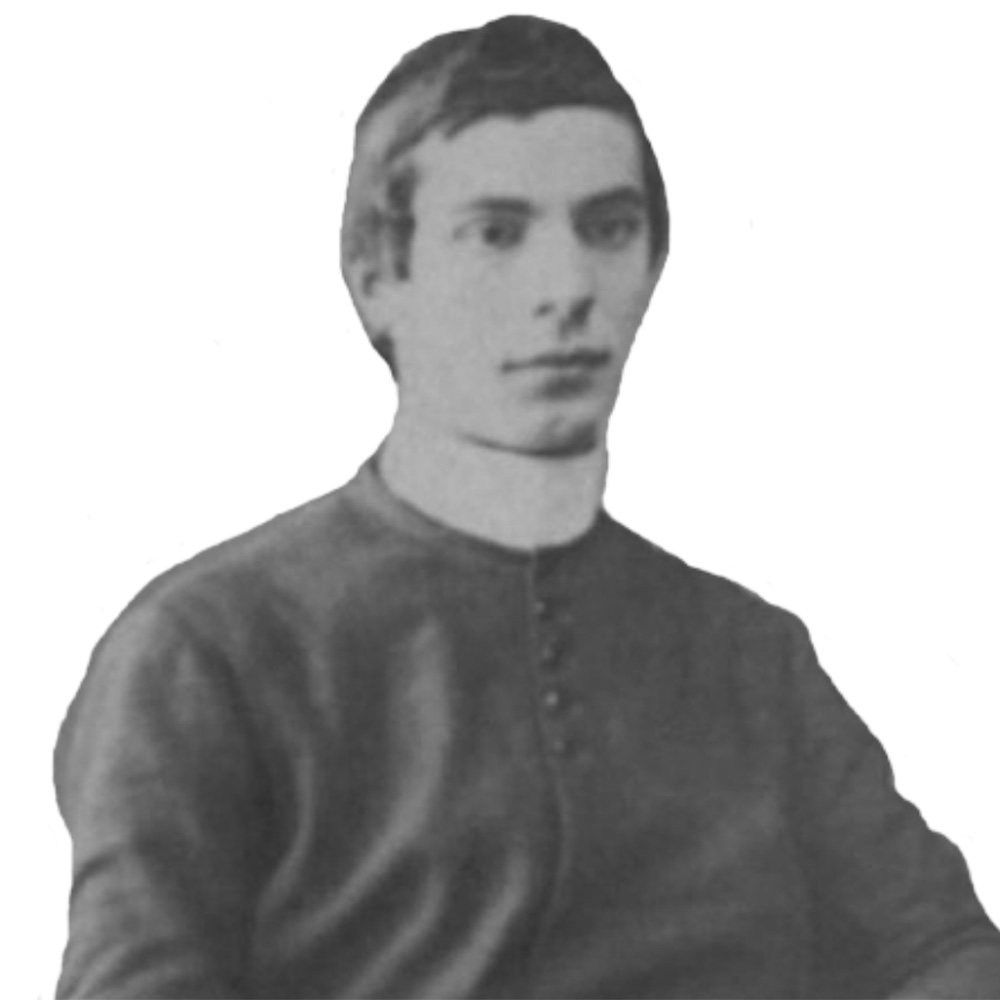
Venerable Carlo Salerio
Priest and Founder
Venerable Carlo Salerio, priest and founder of the Nuns of Repair, was born in Milan on March 23, 1827. He entered the seminary at a young age, studying in Seveso, Monza, and Milan. During his formative years, he took part in the Five Days of Milan uprising in 1848, fighting against Austrian forces. For his courage, he was awarded a commendation by King Carlo Alberto. Ordained a priest in 1850, he joined the Seminary for Foreign Missions, founded by Msgr. Angelo Ramazzotti. In 1852, he departed for the Woodlark and Rook Islands—part of present-day Papua New Guinea—alongside other missionaries. Unfortunately, the mission was plagued by sickness and violence, leading to the deaths of several companions, including Blessed Giovanni Mazzucconi.
Returning to Italy with his health compromised by tuberculosis, Salerio dedicated himself to training young missionaries and preaching. During this period, he became deeply concerned with the struggles faced by women in difficult situations. This reflection inspired him to establish a religious institution to provide shelter and education for young girls in need. In 1859, with the support of Carolina Orsenigo, he founded the Pious Ladies of Nazareth, now known as the Nuns of Repair. Their mission was to educate young girls in an environment of charity and hospitality.
Father Carlo passed away on September 29, 1870. His cause for beatification is currently in progress, and in 2019, Pope Francis declared him Venerable.

Servant of God Silvio Pasquali
Priest and Missionary
Silvio Pasquali was a priest of the Diocese of Cremona and a missionary in India from 1897. His life’s mission was to help the poorest, particularly the pariah, the outcasts of Indian society. After serving as a priest and establishing charitable works in Cremona, he joined the Pontifical Institute for Foreign Missions (PIME) and departed for India, specifically the Andhra Pradesh region. There, with his charisma and dedication, he led a vast evangelization movement, converting thousands of Dalits to Christianity.
Father Pasquali placed great importance on education and formation. In 1914, he founded the Catechist Nuns of St. Anne, a congregation of young local women who played a crucial role in spreading the Gospel in their native language. These nuns, combining catechesis with medical care and education, devoted themselves to improving the lives of the community, especially the pariah, by promoting human dignity and Christian education.
His dedication to the less fortunate and his exemplary Christian life made him a role model for the Indian mission. After his passing in 1924, his grave in Eluru became a pilgrimage site. His cause for beatification was initiated in 2013 by the order of nuns he founded, the Catechist Nuns of St. Anne.
Support us
Support the Sanctuary of the Holy Trinity at the Split Mountain with a generous gesture. You can dedicate a Mass, light a candle, or make a donation to help preserve its spiritual mission and beauty. With your help, this sacred tradition continues to thrive!
Prayer Intentions
Entrust your prayer intentions to the Sanctuary of the Holy Trinity. Our Fathers will present them before the Lord during the celebrations. Additionally, our prayer group will intercede on your behalf, keeping your intentions in their prayers.
